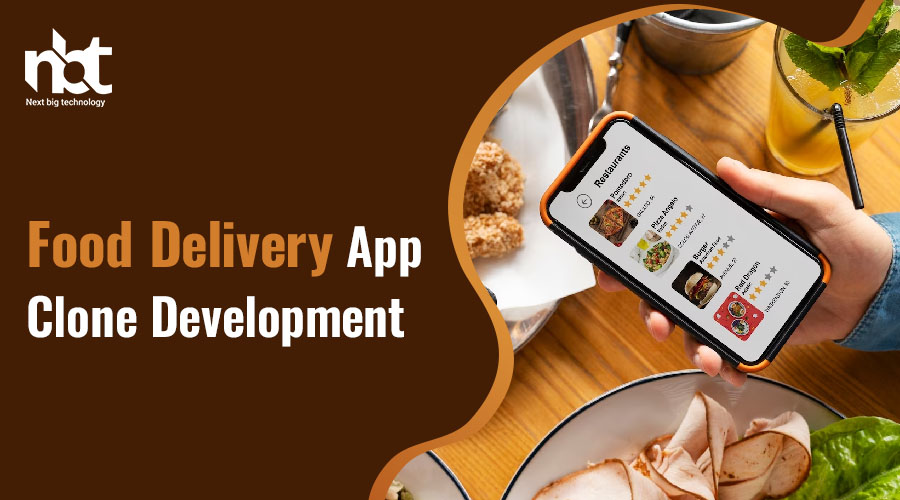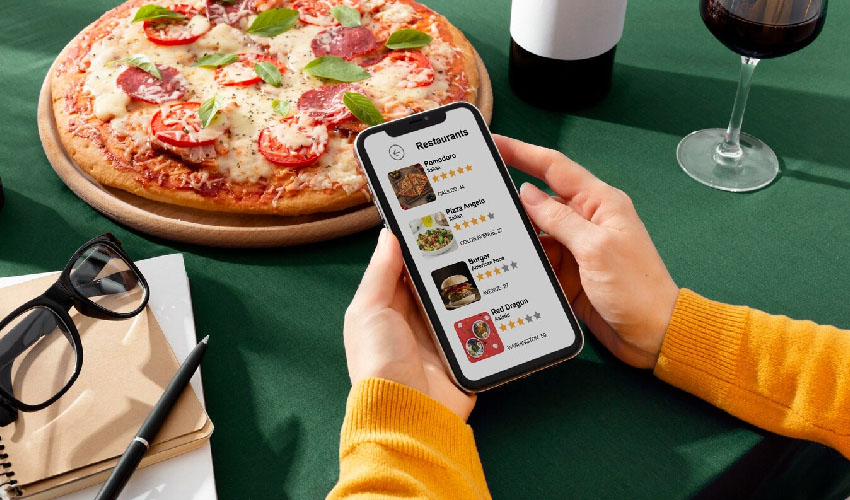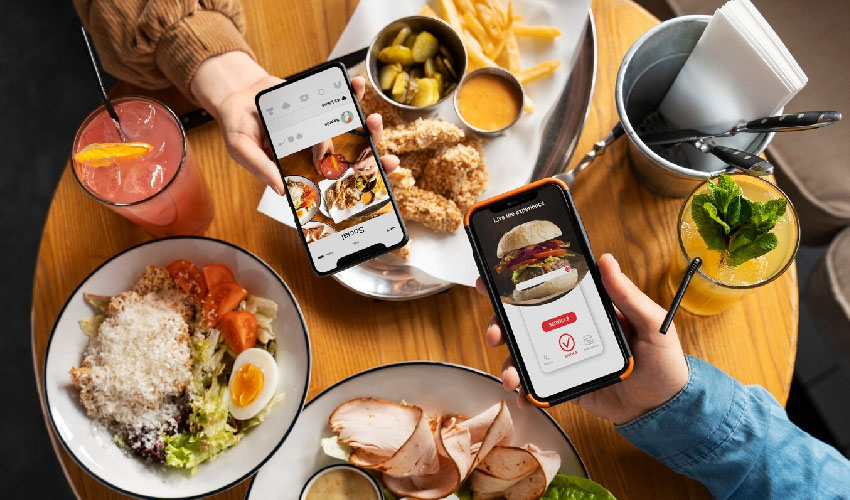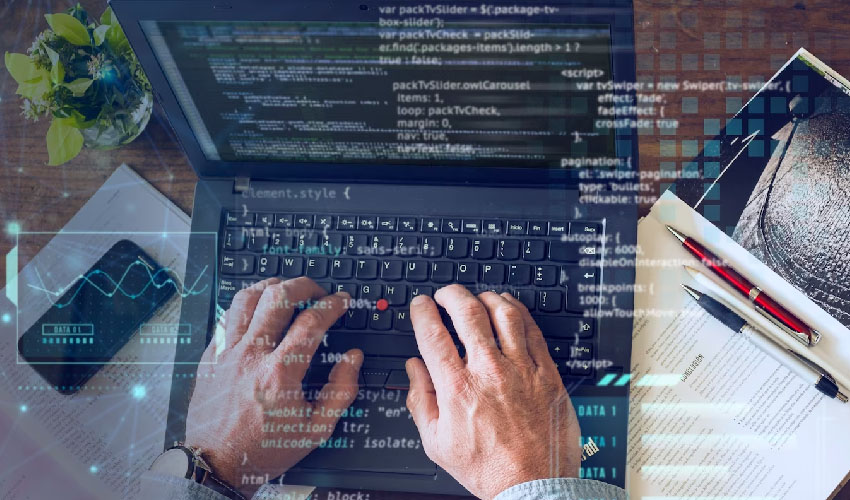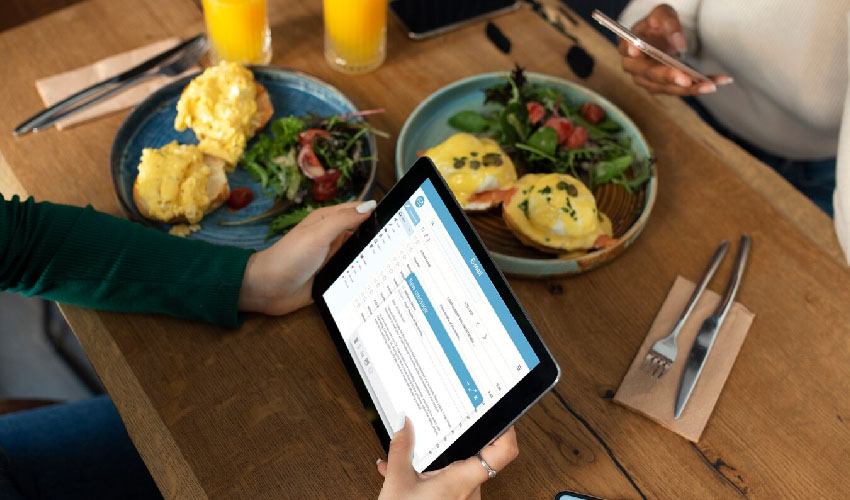Table of Contents
Introduction to Food Delivery App Clone Development
In the dynamic realm of the digital age, where technology shapes our daily lives, one industry has witnessed an unprecedented transformation – the food delivery sector. The advent of food delivery apps has not only changed the way we perceive dining but has also ushered in a new era of convenience and accessibility. As the demand for these platforms continues to soar, a novel trend has emerged in the tech landscape – Food Delivery App Clone Development.
The Genesis of Food Delivery Apps
To truly grasp the significance of Food Delivery App Clone Development, it is essential to reflect on the evolution of food delivery apps themselves. In the early 2000s, the concept of ordering food online was a novelty. However, as smartphones became ubiquitous and internet connectivity improved, a new wave of innovation swept the food industry. Pioneering platforms like Grubhub, Seamless, and later Uber Eats and DoorDash, transformed the way consumers interacted with restaurants.
These platforms not only offered a vast array of culinary options at the fingertips but also provided an efficient and seamless way to have meals delivered to one’s doorstep. The user-friendly interfaces, coupled with features like real-time tracking and secure payment gateways, made these apps an instant hit. As a result, the food delivery app market witnessed an exponential rise, with a plethora of startups entering the arena to cater to the growing demand for on-demand food services.
The Rise of Food Delivery App Clone Development
In the wake of the success of these pioneering platforms, entrepreneurs and businesses sought ways to tap into this lucrative market without starting from scratch. This gave rise to the concept of Food Delivery App Clone Development – a strategy that allows for the replication of successful food delivery apps with a few customizations to align with the unique branding and objectives of the new venture.
Understanding the Concept of App Cloning
At its core, app cloning involves creating a duplicate, or “clone,” of an existing application. In the context of food delivery, this means reproducing the features and functionalities of a successful food delivery app while incorporating specific customizations. The goal is not to create an identical twin but to leverage the proven elements of established apps while infusing a touch of uniqueness.
This approach streamlines the development process significantly, reducing the time and resources required to bring a new app to market. Instead of starting from scratch, businesses can build upon the foundation laid by successful predecessors. This not only accelerates the time-to-market but also mitigates risks associated with developing an untested concept.
Key Features and Functionalities
Central to the success of Food Delivery App Clone Development is the identification and integration of key features and functionalities. These elements are the backbone of any successful food delivery application and contribute significantly to user satisfaction. Among these, an intuitive user interface, real-time order tracking, secure payment gateways, and a robust backend system are paramount.
The user interface serves as the first point of interaction between the consumer and the app. A seamless, user-friendly design enhances the overall experience, making it easy for customers to navigate through the app, browse menus, and place orders effortlessly. Real-time order tracking adds an extra layer of transparency, allowing users to monitor the progress of their orders from the kitchen to their doorstep.
Choosing the Right Technology Stack
The success of any app, cloned or original, hinges on the technology stack that powers it. Selecting the right combination of programming languages, frameworks, and tools is vital for ensuring the app’s performance, scalability, and security. In the realm of Food Delivery App Clone Development, the technology stack should align with the specific requirements of the cloned app.
From the front-end development responsible for creating an engaging user interface to the back-end systems managing the complexities of order processing and delivery logistics, each component of the technology stack plays a crucial role. An informed choice in this regard sets the stage for a robust and reliable food delivery app.
Key Features of Successful Food Delivery Apps
In the ever-evolving landscape of the food industry, the role of food delivery apps has transcended convenience to become an integral part of our daily lives. These apps have not only redefined the way we experience dining but have also given rise to a new era of culinary exploration and accessibility. As the demand for food delivery services continues to soar, the success of these apps hinges on a plethora of features designed to enhance user experience, streamline operations, and foster customer loyalty.
I. Intuitive User Interface (UI): At the heart of every successful food delivery app lies an intuitive and user-friendly interface. A well-designed UI not only simplifies the ordering process but also contributes significantly to the overall user experience. Users should be able to navigate effortlessly, browse menus, and place orders with minimal friction. A visually appealing design, coupled with an intuitive layout, creates a seamless and enjoyable interaction between the user and the app.
II. Real-Time Order Tracking: One of the game-changing features that have set successful food delivery apps apart is real-time order tracking. Users now expect to be able to track their orders from the moment it is placed to the point of delivery. Real-time tracking not only provides transparency but also adds an element of excitement for the users, keeping them engaged and informed throughout the delivery process.
III. Secure and Seamless Payment Gateways: The integration of secure and seamless payment gateways is paramount in building trust and ensuring a hassle-free transaction process. Successful food delivery apps offer a variety of payment options, including credit/debit cards, digital wallets, and even cash on delivery. The emphasis is not only on providing multiple payment choices but also on securing the financial data of users through robust encryption and compliance with industry standards.
IV. Efficient Search and Filter Options: With an extensive array of culinary choices available, users appreciate apps that offer efficient search and filter options. The ability to quickly find specific cuisines, restaurants, or dishes based on preferences, dietary restrictions, or budget constraints enhances the overall user experience. Advanced filtering mechanisms contribute to customer satisfaction by saving time and providing tailored recommendations.
V. Personalized Recommendations: Machine learning algorithms and artificial intelligence play a crucial role in the success of food delivery apps by providing personalized recommendations. These algorithms analyze user behaviour, order history, and preferences to suggest relevant dishes or promotions. The ability to offer personalized recommendations not only increases user engagement but also contributes to upselling and cross-selling opportunities for restaurants.
VI. Customer Loyalty Programs: Successful food delivery apps understand the significance of customer loyalty and implement robust loyalty programs. Rewarding users for their repeat business, referrals, or app engagement fosters a sense of loyalty and incentivizes customers to choose a particular platform over competitors. Loyalty programs may include discounts, cashback, or exclusive access to promotions and events.
VII. Efficient Order Management for Restaurants: Behind the scenes, an efficient order management system is essential for the success of a food delivery app. This includes features for restaurants to easily manage and process incoming orders, update menu items, and communicate with delivery personnel. Seamless integration with the restaurant’s point-of-sale (POS) systems enhances operational efficiency and reduces the likelihood of errors.
VIII. Delivery Partner Integration: The success of a food delivery app is not only reliant on the technology but also on the effectiveness of the delivery logistics. Integration with a reliable network of delivery partners, along with features for efficient route optimization, ensures timely and accurate deliveries. Successful apps prioritize the seamless coordination between restaurants, delivery personnel, and customers to guarantee a positive experience for all stakeholders.
IX. Customer Feedback and Rating System: Transparency and accountability are crucial in the food delivery industry. Implementing a robust customer feedback and rating system allows users to share their experiences, providing valuable insights for both the app and the restaurants. Positive feedback serves as a testament to the app’s reliability, while constructive criticism offers opportunities for improvement and growth.
X. Multi-Platform Compatibility: In the era of diverse digital ecosystems, successful food delivery apps are not limited to a single platform. They prioritize multi-platform compatibility, ensuring that the app is accessible and functions seamlessly on both iOS and Android devices. This broadens the app’s reach and accommodates users with different preferences and devices.
XI. Geolocation and Address Verification: Accurate geolocation services are indispensable for successful food delivery apps. Geolocation enables precise tracking of users’ locations, making it easier for delivery personnel to locate destinations efficiently. Additionally, address verification features help minimize delivery errors, ensuring that orders are delivered to the correct locations.
XII. Offline Functionality: Recognizing that users may face connectivity issues, successful food delivery apps incorporate offline functionality. This feature allows users to browse menus, place orders, and track deliveries even in the absence of a stable internet connection. By prioritizing offline functionality, these apps cater to a broader audience and enhance user satisfaction.
XIII. Social Media Integration: The integration of social media features within the app amplifies its reach and engagement. Successful food delivery apps allow users to share their orders, recommendations, and experiences on social media platforms seamlessly. Social media integration not only serves as a marketing tool but also facilitates user-generated content, creating a sense of community around the app.
Back-End Development: Building a Robust and Scalable System
In the dynamic landscape of food delivery app clone development, the spotlight often falls on the user interface and features that enhance the customer experience. However, the backbone of any successful app lies in its back-end development—a robust and scalable system that ensures seamless operations, efficient order management, and sustained growth. In this comprehensive exploration, we delve into the intricacies of back-end development, understanding its pivotal role and the best practices to build a system that stands the test of time.
I. The Crucial Role of Back-End Development
Defining Back-End Development in the Context of Food Delivery Apps: Back-end development refers to the server side of an application—the engine that powers the entire system. In the context of food delivery app clones, a well-designed back-end is essential for handling user requests, processing orders, managing databases, and integrating third-party services.
The Impact of Back-End on User Experience: While users interact with the front-end of the app, the back-end plays a critical role in delivering a seamless experience. A robust back-end ensures quick response times, real-time data updates, and the ability to handle a growing user base without compromising performance.
II. Designing a Robust Back-End Architecture
Scalability as a Fundamental Principle: Scalability is at the heart of a successful back-end architecture. The system should be designed to handle increased loads gracefully, adapting to growing user numbers and transaction volumes without sacrificing performance.
Choosing the Right Database Architecture: Selecting an appropriate database architecture is a pivotal decision. The choice between relational and NoSQL databases depends on factors such as data structure, scalability requirements, and the complexity of queries.
Server Infrastructure: Cloud vs. On-Premises: The selection between cloud-based and on-premises server infrastructure has profound implications for scalability, cost-effectiveness, and maintenance. Cloud solutions, such as AWS, Azure, or Google Cloud, offer flexibility and scalability advantages.
III. Back-End Technologies and Frameworks
Programming Languages for Back-End Development: The choice of programming language influences the development speed, performance, and maintenance of the back-end. Common languages like Node.js, Python, Ruby, and Java each come with their strengths and considerations.
Frameworks for Efficient Development: Utilizing frameworks can streamline back-end development by providing pre-built modules and structures. Frameworks like Express.js (Node.js), Django (Python), and Ruby on Rails (Ruby) offer a solid foundation for development.
IV. Seamless Integration of Third-Party Services
Payment Gateways: Integrating secure and reliable payment gateways is paramount for any food delivery app clone. The back-end must facilitate smooth transactions, handle payment data securely, and comply with industry standards.
Geolocation and Mapping Services: Efficient real-time order tracking relies on seamless integration with geolocation and mapping services. A well-designed back-end ensures accurate location data, providing users and delivery personnel with real-time updates.
Notification Systems: Implementing a robust notification system is crucial for keeping users informed about order status, promotions, and other relevant updates. The back end orchestrates the delivery of timely and accurate notifications.
V. Security Measures in Back-End Development
Data Encryption and Protection: Given the sensitive nature of user data and financial transactions, back-end development must prioritize data encryption and protection. Implementing SSL certificates and adhering to security best practices is non-negotiable.
User Authentication and Authorization: A secure back-end system incorporates robust user authentication and authorization mechanisms. This includes secure login processes, password encryption, and role-based access control to protect against unauthorized access.
Back-End Development and Customization
Tailoring the Back End to Unique Business Needs: While cloning successful food delivery apps, customization is key to establishing a unique brand identity. The back end must be flexible enough to accommodate these customizations without compromising the core functionalities.
API Development for Seamless Integration: Well-documented and easily accessible APIs (Application Programming Interfaces) facilitate the integration of external services and enable future expansions. The back-end should provide a stable and comprehensive set of APIs for developers.
Testing and Quality Assurance
Unit Testing and Code Reviews: Ensuring the reliability of the back-end requires thorough unit testing and regular code reviews. These practices help identify and rectify potential issues before they impact the overall system.
Load Testing for Scalability: Load testing is crucial for assessing how the back-end performs under various levels of user activity. This process helps identify bottlenecks and ensures that the system can scale efficiently to meet growing demands.
Monitoring and Maintenance
Implementing Monitoring Tools: Continuous monitoring of the back-end infrastructure is essential for identifying performance issues, potential security threats, and system downtimes. Implementing monitoring tools ensures proactive maintenance.
Regular Updates and Upgrades: Keeping the back-end technology stack up-to-date is vital for security, performance, and compatibility with emerging technologies. Regular updates and upgrades should be planned and executed with minimal disruption.
Legal and Regulatory Considerations in Food Delivery App Development
In the ever-evolving landscape of food delivery app development, success not only hinges on technical prowess and user experience but also on a thorough understanding and adherence to the legal and regulatory frameworks that govern this industry. As entrepreneurs embark on the journey of creating and launching a food delivery app, they must navigate a complex web of laws, regulations, and ethical considerations to ensure compliance and foster a trustworthy environment for users, restaurants, and delivery partners.
Intellectual Property Rights and Branding
Before delving into the technical intricacies of app development, it’s essential to address the legal aspects of intellectual property rights (IPR). Cloning an existing food delivery app involves replicating certain features, and while customization is key, it’s imperative to steer clear of infringing on trademarks, copyrights, or patents held by other entities. Thorough due diligence should be conducted to ensure that the app’s branding and visual elements do not violate existing legal protections.
Data Protection and Privacy
As food delivery apps handle a plethora of sensitive information, including personal details, addresses, and payment information, stringent data protection measures are non-negotiable. Entrepreneurs must be well-versed in data protection laws such as GDPR (General Data Protection Regulation) and ensure that their app complies with these regulations. Implementing robust encryption, secure storage practices, and obtaining explicit user consent for data processing are critical steps in fostering user trust and complying with legal standards.
Contractual Agreements with Restaurants and Partners
Establishing clear and legally sound contractual agreements with partner restaurants and delivery service providers is a cornerstone of a successful food delivery app. These agreements should outline the terms of the partnership, including commission structures, delivery timelines, and service-level expectations. Clear communication and transparency in contractual agreements not only foster healthy business relationships but also provide a legal foundation for dispute resolution if issues arise.
Compliance with Food Safety and Hygiene Standards
Beyond the digital realm, food delivery apps are inherently connected to the food industry, subjecting them to food safety and hygiene regulations. Ensuring that partner restaurants adhere to local health codes and standards is essential. Implementing mechanisms for regular inspections, quality control, and user feedback on the hygiene of restaurants can be pivotal in maintaining compliance and safeguarding public health.
Labour Laws and Gig Economy Considerations
The gig economy model, inherent in many food delivery apps, introduces a unique set of legal considerations related to labour laws. Entrepreneurs must navigate the fine line between providing flexible work opportunities for delivery partners and adhering to labour standards. Understanding and complying with minimum wage laws, and working hour regulations, and providing necessary benefits and protections are crucial for both ethical business practices and legal compliance.
Taxation and Financial Compliance
The financial aspects of food delivery app development extend beyond the user interface. Entrepreneurs must grapple with taxation issues, including sales tax on food items, service taxes, and income tax obligations. Navigating the complex terrain of financial compliance requires collaboration with tax professionals who can guide you on meeting legal obligations and avoiding potential pitfalls.
Accessibility and Inclusivity
Legal considerations in food delivery app development also encompass accessibility and inclusivity. Entrepreneurs must ensure that their app is designed to accommodate users with disabilities, complying with accessibility standards such as the Americans with Disabilities Act (ADA). Additionally, fostering inclusivity involves addressing potential biases in algorithms and promoting fair treatment for all users, irrespective of demographic factors.
Advertising and Marketing Regulations
The success of a food delivery app heavily relies on effective marketing strategies. However, these strategies must operate within the bounds of advertising and marketing regulations. Avoiding deceptive practices, ensuring transparency in promotions, and obtaining necessary permissions for user data usage in targeted advertising is crucial for staying on the right side of the law.
Geographic and Jurisdictional Compliance
Launching a food delivery app often means operating in multiple jurisdictions, each with its unique set of regulations. From licensing requirements to local business regulations, entrepreneurs must thoroughly research and comply with the legal landscape in each region of operation. Failure to do so could lead to legal repercussions and damage the app’s reputation.
conclusion
Food Delivery App Clone Development offers a shortcut to success in the competitive world of food delivery services. By combining proven features with unique customization, entrepreneurs can carve their niche in this thriving market. As the demand for convenience continues to rise, the future of food delivery app clones looks promising, offering a win-win solution for businesses and consumers alike.
Thanks for reading our post “Food Delivery App Clone Development”. Please connect with us to learn more about the Food Delivery App.




